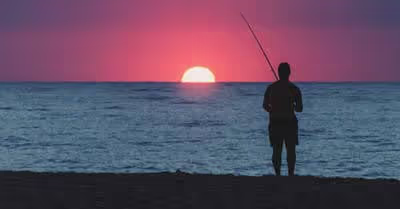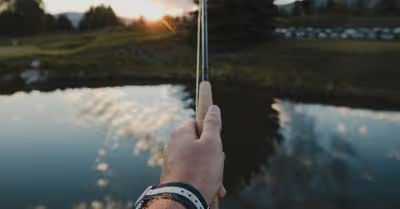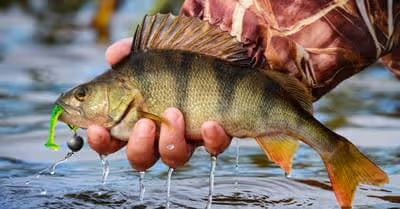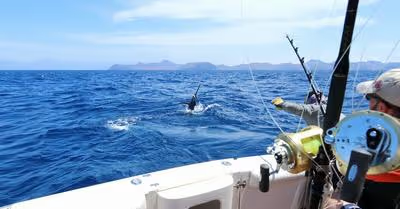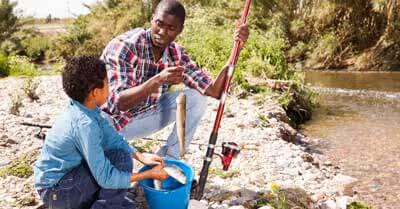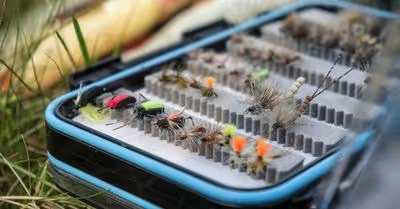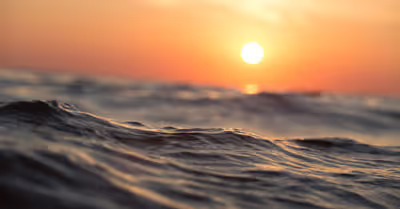Table of Contents
Types of Fishing
Bait fishing
Bait fishing, also known as still fishing, is fishing of the most simple and basic kind. You can bait fish with as little equipment as possible - a reel, rod, hook, and bait, but no more.
Bait fishing is a simple matter of catching fish from shore. You do not need a boat, a fly fishing rod, or any other non-basic equipment.
It may also be easy to find many great local fishing spots. There are ponds, creeks, lakes, and rivers where you can catch fish all over the country.
In North America, the fish you can commonly catch with this method include catfish, carp, bass, bluegills, and perch. Common bait includes worms, tiny fish, cheese, maggots, and crayfish.
Since a boat costs money, many anglers only fish from shore or fish from shore for a long time before buying a boat. As someone gets more into the sport, they may move beyond typical shore fishing and try other types of fishing.
Trolling
If you have a boat, trolling is a great way of catching fish. Instead of casting a line, you will draw a fishing line behind a boat, hoping a fish takes the bait.
Usually, anglers do this with a motorboat, but a rowboat will work just as well. Most people do this in freshwater, but it is the best way to catch large ocean fish.
Trolling works because of the amount of area you can cover. If no fish take your bait in one spot, you will quickly move to another, where the fish might be more gullible.
For this technique to work well, you need to know where the fish are. If you move your lure too fast, too deep below the surface, or not deep enough, the fish won't take your bait. Many anglers use sonar technology, which makes trolling much easier.
Trolling requires long, sturdy rods and heavy lines, as you often catch large fish with this method. You also need to use weight to get your bait and hook deep enough below the surface.
Fly fishing
Fly fishing is all about fishing with artificial flies. A lure made of feathers or synthetic materials will appear to be a fly to many fish.
Fly fishing requires different techniques than bait fishing. The fly must hit the water gently to trick the fish into thinking it is food. You cannot fly fish with the same equipment you use in bait fishing.
First, you need a heavier line. When bait fishing, you can cast your hook a long way because the bait's weight helps the hook fly through the air.
With fly fishing, this will not work because the fly weighs almost nothing. If there is very little weight on the end of a bait fishing line, you won't be able to cast it very far. For this reason, you need a fly line, which is heavier than a typical fishing line and has enough weight to move through the air without much weight at the end.
Fly fishing rods and fly fishing reels are also different. Fly fishing rods are long - 7 or 11 feet - and the reel is simpler than a baitcasting reel. The heavy line also has a light leader attached to the end of it.
Fly fishing technique
Casting a fly fishing line takes a bit of practice. Much of the skill is in getting your casting technique right.
You have to learn a good casting technique before you can learn anything else. You must also know how to build a fly fishing line properly and tie the right knots.
After you can cast a fly fishing line properly, you must learn to trick and outsmart the fish. Go slowly and try to spot fish in the water.
If you wade in the water, move slowly. A little bit of sound can spook a fish. You can catch a wide variety of fish with this technique, but trout, pike, salmon, grayling, and carp are the most common.
Saltwater Fishing
Bait fishing, fly fishing, and trolling all work just as well in saltwater. Fly fishing in saltwater was once unpopular, but it became common towards the end of the 20th century. You can fish in the sea from the shore, from a dock, or with a boat.
From shore, you can catch sea bass, bonefish, and tarpon. With a boat, you may catch mackerel, flounder, and snapper, as well as countless other species regardless of how you fish.
Fishing in saltwater is not vastly different from fishing in freshwater, so it is done with similar equipment. A type of fishing line that works in freshwater is not always good in saltwater. Saltwater can weaken the line, so you need a line that water will not corrode.
Saltwater can also damage your reel. Green corrosion will accumulate on the reel over time, eventually making the reel unusable.
A reel made of the right materials can resist corrosion. You can also stop saltwater corrosion yourself if you do a bit of maintenance on your reel. You can take a reel apart and use solvent, white vinegar, paper towel, and fine steel wool to remove the corrosion before it gets any worse.
Big game fishing
With a motorboat, you can catch much larger fish than you could in other ways. Some big game fishers catch small sharks. Large tunas and swordfish are commonly caught.
Big game fishing is not new and goes back a little before the beginning of the 20th century, but not much farther as it requires motorboats.
Ordinary fishing equipment is nowhere near good enough for big game fishing. Rods have to be huge and fit into sockets on the boat's seats. The line must be strong enough to handle a large fish, and the end of the line must be wire to prevent the fish from biting through it.
Drone fishing
As strange as it might sound, many people use drones to catch fish. You can either buy a drone specifically for fishing or buy accessories that allow you to fish with a drone that is not specifically for fishing.
When drone fishing, you use a drone to carry your fishing line a long way away from you and drop the hook into the water. The drone will then hover in place until a fish takes your bait.
After you hook a fish, the drone will let your line go, and you will be able to reel the fish in as you would without a drone. One advantage of drone fishing is that you can take your line very far away from you easily. You can use a drone to bring your bait to hard to reach places.
While a boat may scare fish away, a drone will not - the fish usually won't even notice. You can also use a drone's camera to look for fish.
There is some risk of losing a done when fishing. While the line should detach from the drone as soon as you hook a fish, the line might fail to detach. If the line remains attached to the drone, a big fish can pull it down.
Ice fishing
You don't have to give up fishing during the winter months. While fish are less energetic in the cold winter water, they still have to move around and feed. If you know a few tricks, you can do well catching fish through a hole in the ice.
To cut a hole in the ice for ice fishing, you need an auger. An auger is a drill made for cutting through ice, shaped like a giant screw.
You can use a hand-powered auger, or, if you want to spend a little more, a power auger instead. You can also use an ice chisel - a pole with a blade at the end - but I recommend an auger because it is faster and easier.
Another piece of equipment that people buy for ice fishing is an ice shelter. Sometimes, people go ice fishing without one - it depends on how cold it is and how long you plan to be out - but ice fishing is best with a shelter.
Ice fishing safety and technique
When you are ice fishing, you must take safety seriously. Falling into cold water can easily kill you. You might go into shock and be unable to pull yourself back up onto the ice.
The most important thing is to make sure the ice is thick enough first. Ice that is four inches thick is thick enough to walk on. While you might be able to get away with walking on ice that is only two and a half inches thick, you are pushing your luck if you don't stick to the four inches rule.
Check that the ice seems sturdy - cracked ice that is thick enough may not hold a person's weight. Walk slowly. If you are slow and careful, you will have time to move your foot back if you step on weak ice.
It is vital to get the depth right in ice fishing. Fish behave differently during the winter and may stay at a specific depth. Look up the right depth for the fish you are trying to catch.
Fish have less energy in the winter. Don't move your bait around too much. The fish might not be energetic enough to go for if you are moving it.
You may also want to fish at the bottom of the lake during the winter months. Some fish such as perch and bluegills are found near the bottom in winter.
You should also cover your ice fishing hole to prevent light from getting into the water. Most fish will be scared away by the light, even if it might attract some.
Spearfishing
People have fished with spears for tens of thousands of years. While you can kill fish with something as simple as a sharpened stick, people use more advanced equipment today.
These days, people go spearfishing with elastic powered spearguns and slings. More advanced spearguns use compressed gas rather than elastics.
Some people hunt fish underwater by holding their breath. Others use snorkels or use diving gear, though spearfishing with diving gear is illegal in some places. There is typically no bait in spearfishing.
Traditional spearfishing
In traditional spearfishing, you do not swim underwater. Instead, you use a simple spear or trident for hunting fish in shallow water. With enough skill, you can spear carp and other fish in shallow water with a trident.
Modern spearfishing
Modern spearfishing involves swimming underwater and using other equipment besides a spear. In France, Italy, and California in the first half of the 20th century, underwater spearfishing became popular. People initially only used watertight diving goggles and no other modern equipment.
As the sport became more popular in the 1920s, 1930s, and 1940s, people tried and invented new equipment. Diving masks, fins, and snorkels became common.
Gear used by spearfishers influenced the development of scuba diving equipment. While spearfishing is not yet an Olympic sport, there are international organizations that keep records.
Spearguns and other options
Many spearfishers use spear guns, which can either be powered by compressed air or by rubber bands. Elastic powered spearguns are more and not less powerful than compressed air spearguns.
A Hawaiian sling is a simpler option. This is a tube with an elastic band attached to it, and you launch the spear through the tube.
Some people also use polespears. A polespear is a spear with an elastic band attached to one end of it, which you use to propel the spear.
Modern fishing spears are made of many different materials. Titanium aluminum, carbon fiber, and fiberglass are all used.
Recent Articles



